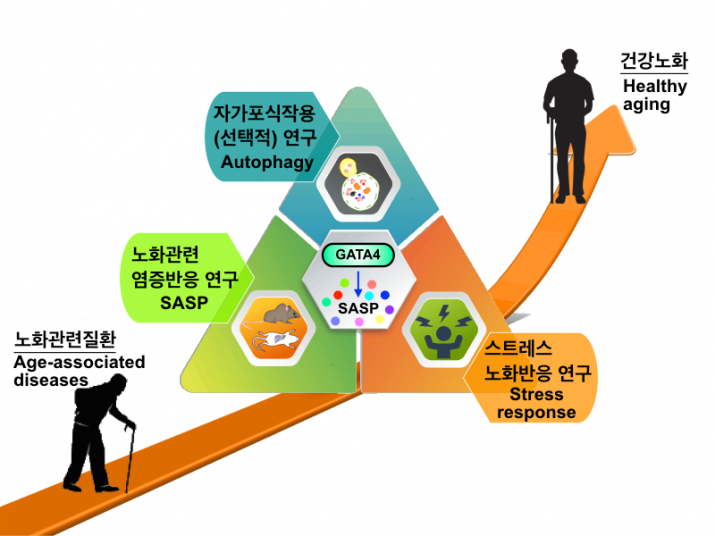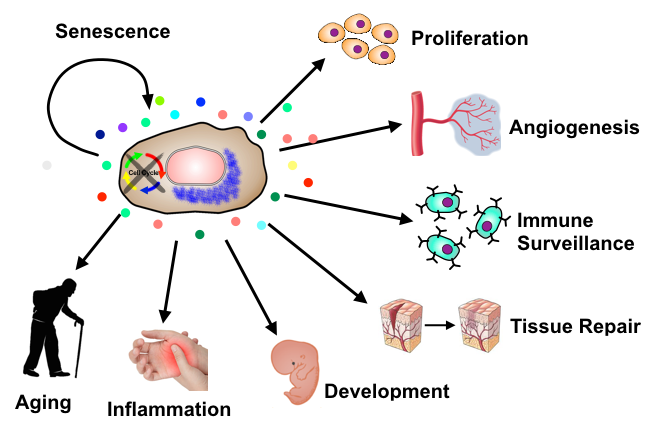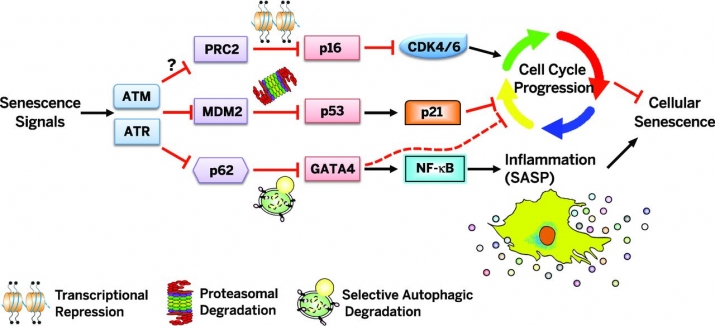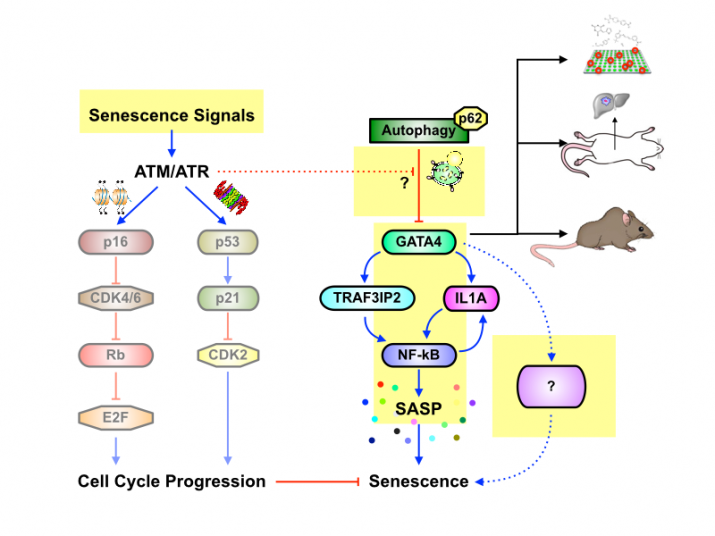Coping with stress is essential for all organisms, and several stress responses have been evolved to maintain homeostasis. Autophagy and cellular senescence are among critical as 1) they respond to many different types of stress and 2) they are closely involved in many human diseases including age-associated diseases, aging itself, and cancer. Our goal is to better understand autophagy and cellular senescence that may provide avenues of therapeutic intervention for the treatment of such devastating human diseases and have important implications for human health.
Cellular senescence is a terminal program of growth arrest triggered by many stresses, and similar to apoptosis, it acts intrinsically as a tumor suppressive mechanism by limiting further proliferation of damaged cells. Furthermore, in contrast to apoptosis that mainlyacts cell-autonomously, cellular senescence can also function cell-nonautonomously to coordinate homeostasis responses; This occurs through the secretion of pro-inflammatory cytokines, growth factors, and proteases from senescent cells: the Senescence Associated Secretory Phenotype (SASP).
Despite such pleiotropic effects of the SASP, little is known about how it is regulated until recently, in contrast to well-studied senescence growth arrest where the p53 and p16 tumor suppressor pathways have a crucial role. Our recent study has identified a transcription factor GATA4 as a key switch to activate the SASP, independently from the p53 and p16 pathways. In addition, we have discovered how GATA4 is regulated during cellular senescence by selective autophagy and the DNA damage response (DDR). Thus, our study establishes the GATA4 pathway as a new branch in the senescence regulatory network and opens a new field that connect DDR, autophagy, protein stability, senescence, and inflammation.

Although we gained new insight into the role of selective autophagy during senescence and SASP regulation through GATA4, our current understanding of the GATA4 pathway is still limited. We are currently employing genetics, molecular biology, biochemistry, genomics and cell biology to elucidate 1) the selective autophagy network and 2) the senescence regulatory network with focus on the SASP in detail. Specifically, we will 1) elucidate the GATA4 pathway in the senescence regulatory network, 2) determine potential in vivo roles of the GATA4-SASP pathway during tumorigenesis and aging, 3) examine the stress-specific regulation of selective autophagy, cellular senescence, and the SASP, and 4) develop the stress-specific reporter system that is suitable for genome-wide genetic screens.
